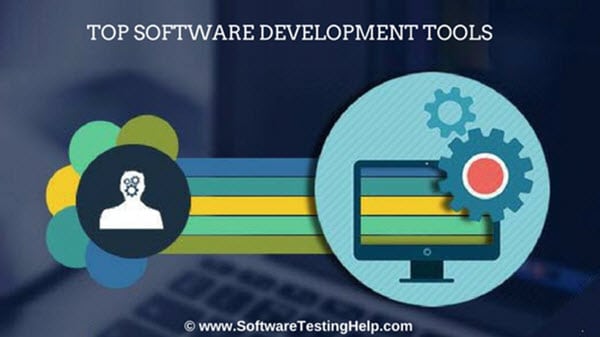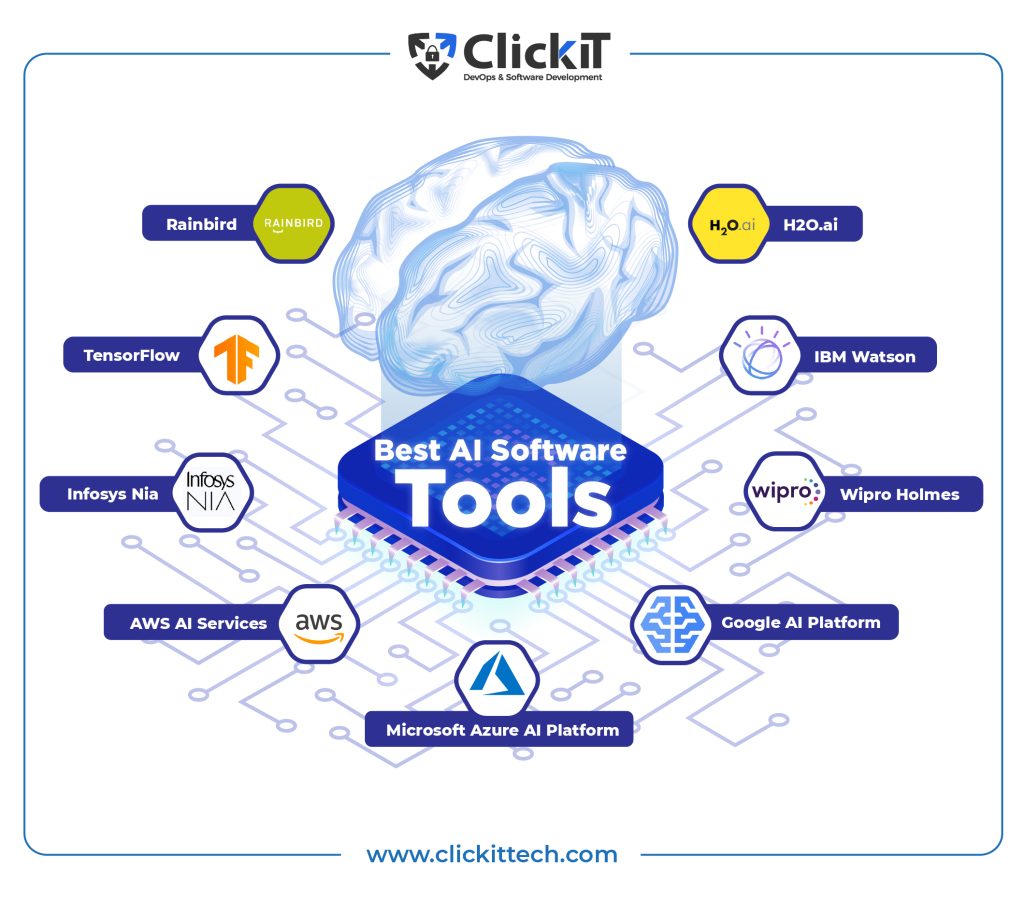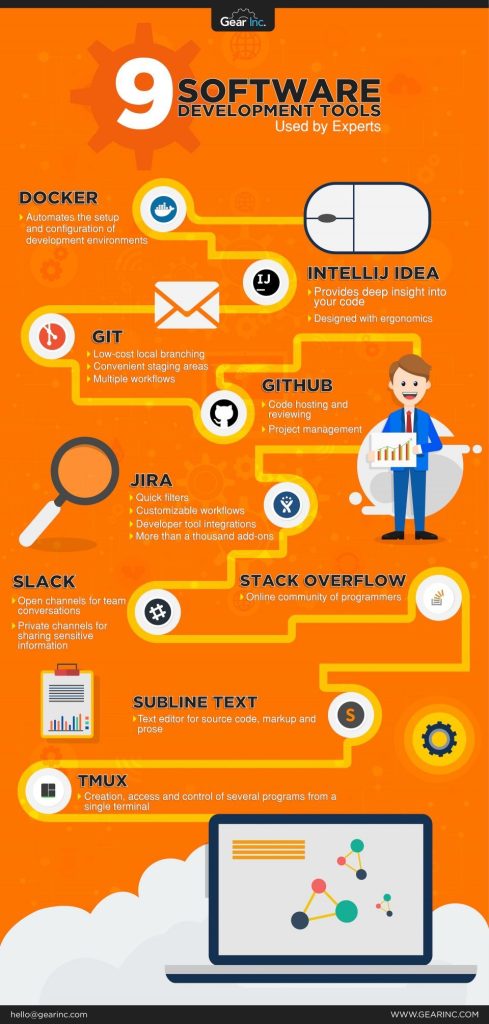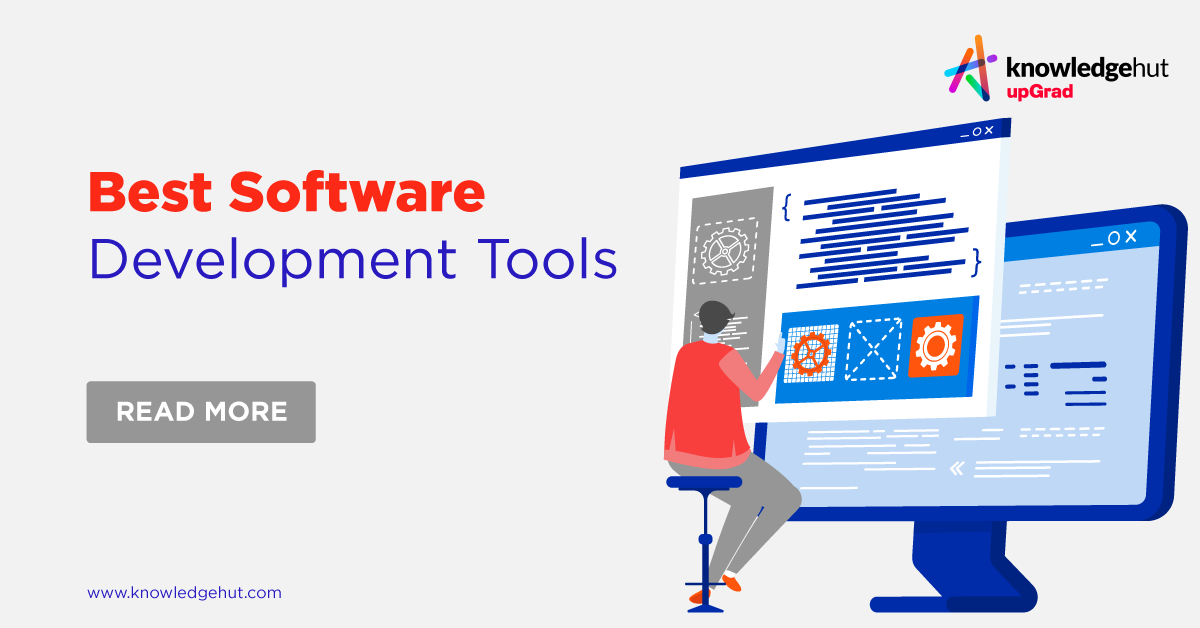So you’ve decided to enhance your skills and learn a new software tool, but now you’re faced with the overwhelming question of which one to choose. With an enormous range of options available, each promising to revolutionize your workflow and bring you one step closer to becoming a digital whiz, it’s easy to feel lost in a sea of possibilities. But fear not! In this article, we’ll explore the pros and cons of various software tools, helping you determine which one is best suited to your needs and goals. So buckle up, get ready to weigh the options, and let’s find the perfect software tool for you to master.

This image is property of www.softwaretestinghelp.com.
1. Microsoft Excel
Microsoft Excel is a powerful spreadsheet software that is widely used in various industries and professions. It offers a wide range of features and functionalities that can greatly enhance your productivity and efficiency when working with data and numbers. Excel is particularly known for its ability to perform complex calculations and create formulas to automate repetitive tasks.
1.1 Formulas and Functions
One of the key features of Excel is its ability to create formulas and use functions to perform calculations. Formulas allow you to perform mathematical operations on your data, while functions provide predefined formulas for specific tasks. Whether you need to add up a column of numbers, calculate averages, or find the maximum or minimum value, Excel’s formulas and functions can make it easy to perform these calculations accurately and efficiently.
1.2 Data Analysis
Excel is also an excellent tool for data analysis. It provides various tools and features that allow you to analyze your data and gain insights from it. With features like filtering, sorting, and pivot tables, you can quickly organize and analyze large sets of data. You can also create charts and graphs to visualize your data and identify trends and patterns. Excel’s data analysis capabilities make it an essential tool for anyone working with data.
1.3 Data Visualization
In addition to data analysis, Excel also offers powerful data visualization tools. You can create visually appealing charts and graphs that present your data in a meaningful way. Whether you need to create a bar chart, line graph, or pie chart, Excel provides a wide range of chart types to choose from. These visualizations can help you communicate your data effectively and make it easier for others to understand your findings.
2. Adobe Photoshop
Adobe Photoshop is a leading software for photo editing, graphic design, and digital art. It is widely used by photographers, graphic designers, and artists to manipulate and enhance images, create illustrations, and design visually stunning graphics.
2.1 Photo Editing
Photoshop is known for its powerful photo editing capabilities. It allows you to make adjustments to color, brightness, and contrast, remove unwanted elements from photos, and apply various filters and effects to enhance the overall look of an image. With Photoshop, you can retouch portraits, remove blemishes, and even completely change the background of a photo. Whether you are a professional photographer or just want to improve your personal photos, Photoshop offers all the tools you need for advanced photo editing.
2.2 Graphic Design
Graphic designers often rely on Photoshop to create visually appealing designs and artwork. The software provides a wide range of tools and features that allow designers to create and manipulate shapes, text, and images. From designing logos and posters to creating web graphics and social media content, Photoshop offers endless possibilities for graphic design.
2.3 Digital Art
Photoshop is also a popular tool among digital artists. It allows artists to create digital paintings, illustrations, and concept art. With its extensive brush library and painting tools, Photoshop provides the flexibility and control needed for artistic expression. Digital artists can experiment with different brushes, textures, and blending modes to create unique and captivating digital artwork.

This image is property of images.clickittech.com.
3. Python
Python is a versatile programming language that is widely used for a variety of purposes, including data manipulation, web development, and machine learning. It is known for its simplicity and readability, making it a great language for beginners to learn.
3.1 Introduction to Python
Python is often recommended as a first programming language for beginners due to its easy-to-understand syntax. With Python, you can quickly learn the basics of programming and start writing simple programs. It provides a solid foundation for learning more advanced programming concepts and languages.
3.2 Data Manipulation
Python has powerful libraries for data manipulation and analysis, such as Pandas and NumPy. These libraries provide functions and tools for handling and manipulating large datasets efficiently. With Python, you can clean and preprocess data, perform calculations, and extract insights from your data easily.
3.3 Web Development
Python’s simplicity and versatility make it a popular choice for web development. Frameworks like Django and Flask provide the tools and structure needed to build robust and scalable web applications. Python’s ease of use and extensive documentation make it a great choice for both beginners and experienced developers.
3.4 Machine Learning
Python is widely used in the field of machine learning and artificial intelligence. Libraries like TensorFlow and PyTorch allow you to build and train complex machine learning models with ease. Python’s simplicity and extensive library support make it a popular language for developing and implementing machine learning algorithms.
4. AutoCAD
AutoCAD is a software used for computer-aided design (CAD) and drafting. It is widely used in industries like architecture, engineering, and construction to create precise and detailed drawings.
4.1 2D Drawing
AutoCAD excels in creating 2D drawings with precision and accuracy. It provides a comprehensive set of tools for creating lines, shapes, and dimensions. Whether you need to create floor plans, elevations, or technical drawings, AutoCAD’s 2D drawing capabilities make it an essential tool for architects and designers.
4.2 3D Modeling
In addition to 2D drawings, AutoCAD also offers powerful 3D modeling capabilities. You can create realistic and detailed 3D models of buildings, objects, and landscapes. With AutoCAD’s 3D tools, you can manipulate objects in three dimensions, apply materials and textures, and even simulate lighting and shadows.
4.3 Architectural Design
AutoCAD is widely used in the field of architecture for designing and planning buildings. Architects use AutoCAD to create detailed floor plans, elevations, and sections. AutoCAD allows architects to visualize their designs accurately, analyze spatial relationships, and make informed decisions about the design and layout of a building.

This image is property of cdn.hackr.io.
5. Front-End Development Tools
Front-end development tools are essential for building and designing websites. These tools include HTML, CSS, JavaScript, and responsive web design.
5.1 HTML
HTML, or Hypertext Markup Language, is the standard language for creating web pages. It provides the structure and content of a webpage, defining headings, paragraphs, images, links, and more. Understanding HTML is fundamental to front-end development.
5.2 CSS
CSS, or Cascading Style Sheets, is used to control the appearance and layout of web pages. It allows you to define the colors, fonts, spacing, and other visual aspects of your website. CSS works in conjunction with HTML to create visually appealing and user-friendly web pages.
5.3 JavaScript
JavaScript is a programming language that adds interactivity and dynamic behavior to web pages. With JavaScript, you can create interactive forms, add animations, and build responsive features. It is an essential tool for creating dynamic and engaging websites.
5.4 Responsive Web Design
Responsive web design is an approach to web design that ensures websites look and function well on all devices and screen sizes. With the increasing use of mobile devices, it is crucial to create websites that adapt to different screen sizes. Tools like media queries and flexible grids help developers create responsive web designs that can be easily accessed and navigated on any device.
6. Adobe Illustrator
Adobe Illustrator is a vector graphic design software that is widely used by designers, illustrators, and artists. It is known for its precision and scalability, making it the go-to tool for creating logos, illustrations, and typography.
6.1 Vector Graphic Design
Vector graphics are made up of mathematical equations and can be scaled infinitely without losing quality. Illustrator excels in creating vector graphics, allowing designers to create precise and detailed illustrations. Whether you need to design a logo, create icons, or draw illustrations, Illustrator provides the tools and controls needed for vector graphic design.
6.2 Typography
Typography plays a vital role in design, and Illustrator offers a wide range of tools and features for working with text. You can create custom fonts, apply unique effects, and manipulate text in various ways. Illustrator allows designers to create visually stunning typographic designs that can be used in print or digital media.
6.3 Logo Design
Creating logos requires precision and attention to detail, and Illustrator is the perfect tool for the job. With its vector-based approach, you can create logos that can be scaled to any size without losing quality. Illustrator provides a wide range of tools and features for creating and manipulating shapes, combining them to create unique and memorable logos.

This image is property of d2o2utebsixu4k.cloudfront.net.
7. SQL
SQL, or Structured Query Language, is a programming language used for managing and manipulating data in relational databases. It is widely used in industries like finance, marketing, and healthcare to store and retrieve data efficiently.
7.1 Database Management
SQL allows you to manage and organize data in relational databases. You can create tables, define relationships between tables, and enforce data integrity constraints. SQL provides a powerful and efficient way to store and manage large amounts of structured data.
7.2 Data Manipulation
With SQL, you can manipulate data within databases using various operations like INSERT, UPDATE, and DELETE. You can modify existing data, add new data, or remove data as needed. SQL’s data manipulation capabilities make it easy to update and maintain the data stored in databases.
7.3 Data Analysis
SQL also provides tools for analyzing and querying data within databases. You can use SQL queries to retrieve specific subsets of data, perform calculations, and aggregate data. With SQL’s data analysis capabilities, you can extract valuable insights from your data and make data-driven decisions.
8. Unity
Unity is a powerful game development platform that allows you to create games and interactive experiences for various platforms, including desktop, mobile, and virtual reality.
8.1 Game Development
Unity provides a comprehensive set of tools and features for building games. It offers a visual editor that allows you to create scenes, design levels, and add assets to your game. You can also write scripts in C# to define game mechanics, behaviors, and interactions. Unity’s extensive documentation and community support make it a popular choice for game developers.
8.2 Virtual Reality (VR)
Unity has built-in support for virtual reality development, allowing you to create immersive and interactive VR experiences. You can build virtual environments, design interactive objects, and implement realistic physics. Unity’s VR capabilities make it a great tool for exploring the possibilities of virtual reality.
8.3 Augmented Reality (AR)
In addition to VR, Unity also offers support for augmented reality development. With Unity, you can create AR applications that overlay digital content onto the real world. You can design interactive AR experiences, visualize objects in 3D, and create unique user interactions. Unity’s AR capabilities make it a versatile tool for creating innovative and engaging AR applications.

This image is property of cdn-infographic.pressidium.com.
9. MATLAB
MATLAB is a programming language and environment for numerical computing, data analysis, and simulations. It is widely used in scientific research, engineering, and financial modeling.
9.1 Numerical Computing
MATLAB provides a wide range of functions and tools for numerical computing. It allows you to perform complex mathematical calculations, solve equations, and manipulate matrices and vectors. With MATLAB, you can perform advanced numerical analysis and simulations efficiently.
9.2 Data Analysis
MATLAB offers powerful data analysis capabilities that help you explore and visualize data. You can import, clean, and preprocess data, and then use MATLAB’s functions and tools to analyze and visualize it. Whether you need to perform statistical analysis, create data plots, or develop machine learning models, MATLAB provides the necessary tools for data analysis.
9.3 Simulations
MATLAB is widely used for modeling and simulating complex systems. You can create simulations of physical systems, financial models, and control systems, among others. MATLAB provides a range of simulation tools and libraries, allowing you to model and analyze systems with ease. MATLAB’s simulation capabilities make it a valuable tool for engineers and researchers.
10. WordPress
WordPress is a popular content management system (CMS) that allows you to create and manage websites easily. It is widely used for building blogs, business websites, and e-commerce sites.
10.1 Website Creation
WordPress provides a user-friendly interface for creating websites without the need for coding knowledge. You can choose from a wide range of themes and templates to customize the look of your website. WordPress also offers a plugin architecture that allows you to extend the functionality of your website with various features and tools.
10.2 Content Management
WordPress’s content management capabilities make it easy to create, edit, and organize content on your website. You can create and publish blog posts, manage media files, and organize your content into categories and tags. WordPress’s intuitive content management system ensures that you can manage your website’s content efficiently.
10.3 Customization
WordPress allows you to customize your website to meet your specific needs. You can customize the appearance of your website by changing themes, colors, and fonts. You can also add functionality to your website by installing plugins. Whether you need a contact form, an e-commerce store, or a membership system, WordPress’s customization options make it easy to tailor your website to your requirements.
In conclusion, the best software tool to learn depends on your specific interests and career goals. Microsoft Excel is a versatile tool for data analysis and visualization, while Adobe Photoshop and Illustrator are essential for graphic design and digital art. Python is a powerful programming language for data manipulation, web development, and machine learning. AutoCAD is widely used in architectural and engineering design, and Unity is an industry-standard for game development. SQL is crucial for managing and analyzing data in databases, and MATLAB is ideal for numerical computing, data analysis, and simulations. Lastly, WordPress provides a user-friendly platform for website creation and management. Whether you are interested in data analysis, design, programming, or web development, these software tools offer valuable skills and opportunities in various industries. It is worth considering your interests and career aspirations to determine the software tool that is best suited for you.
